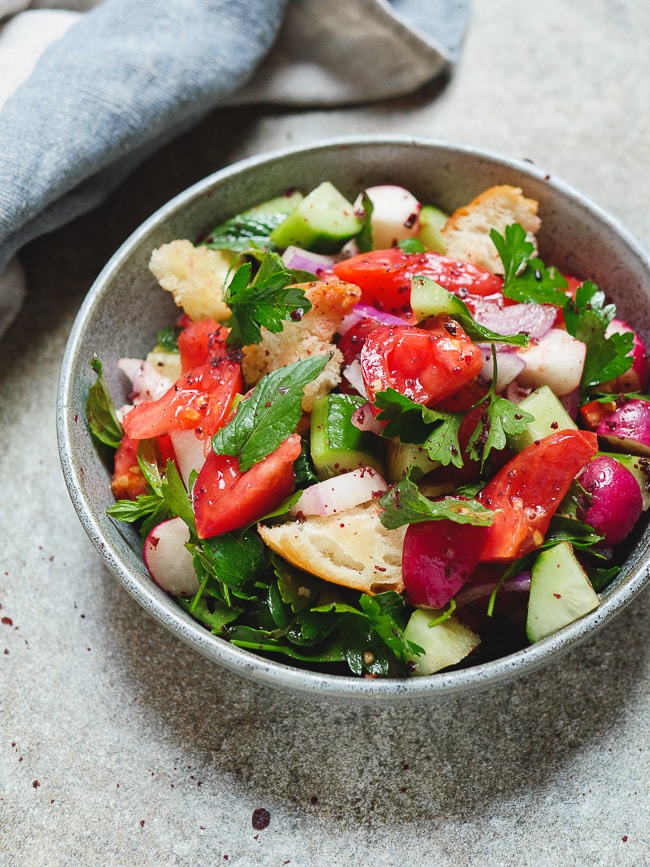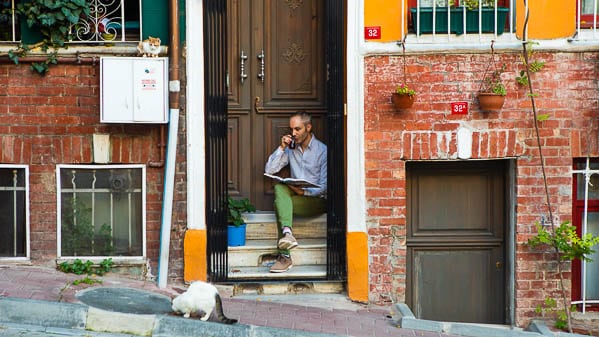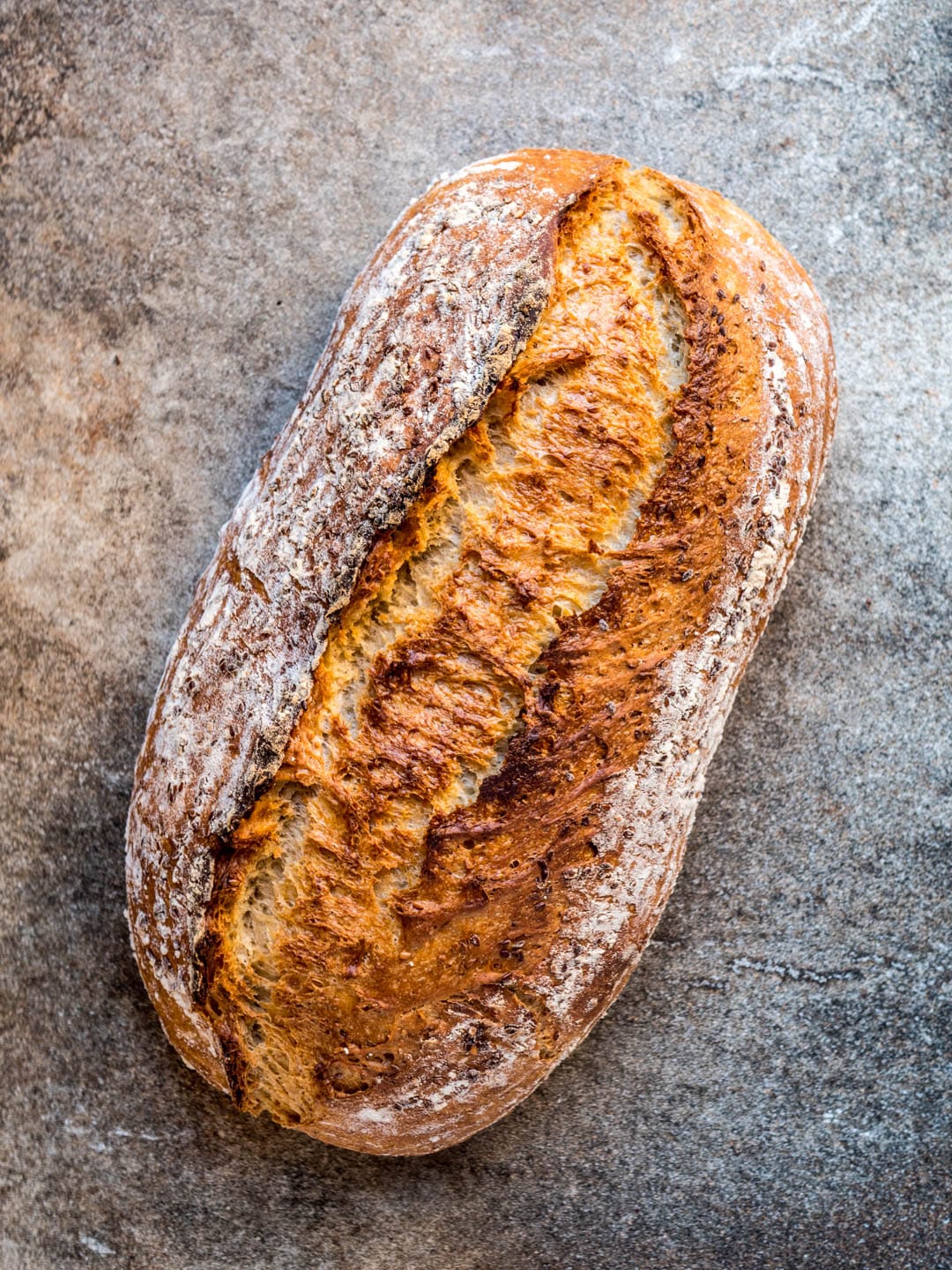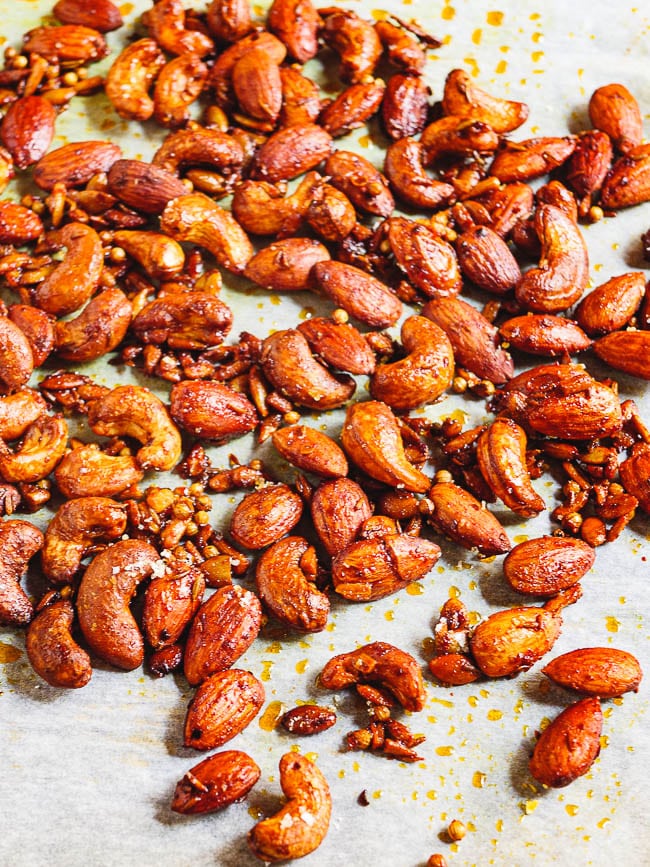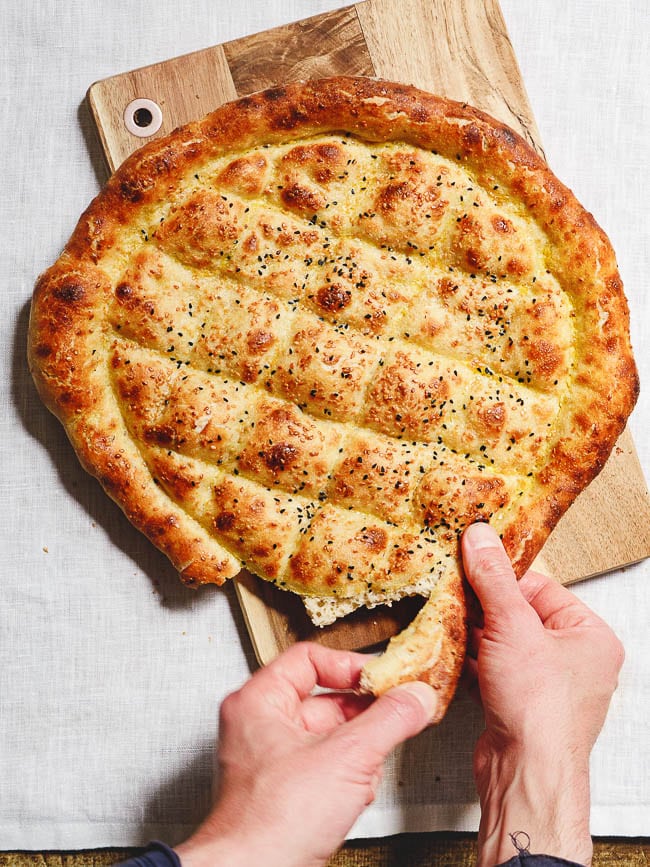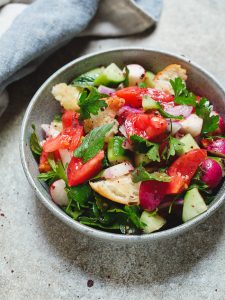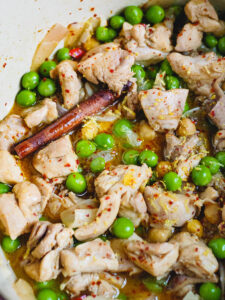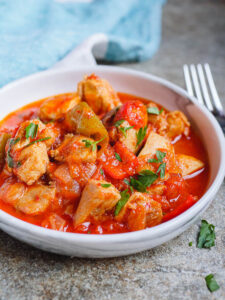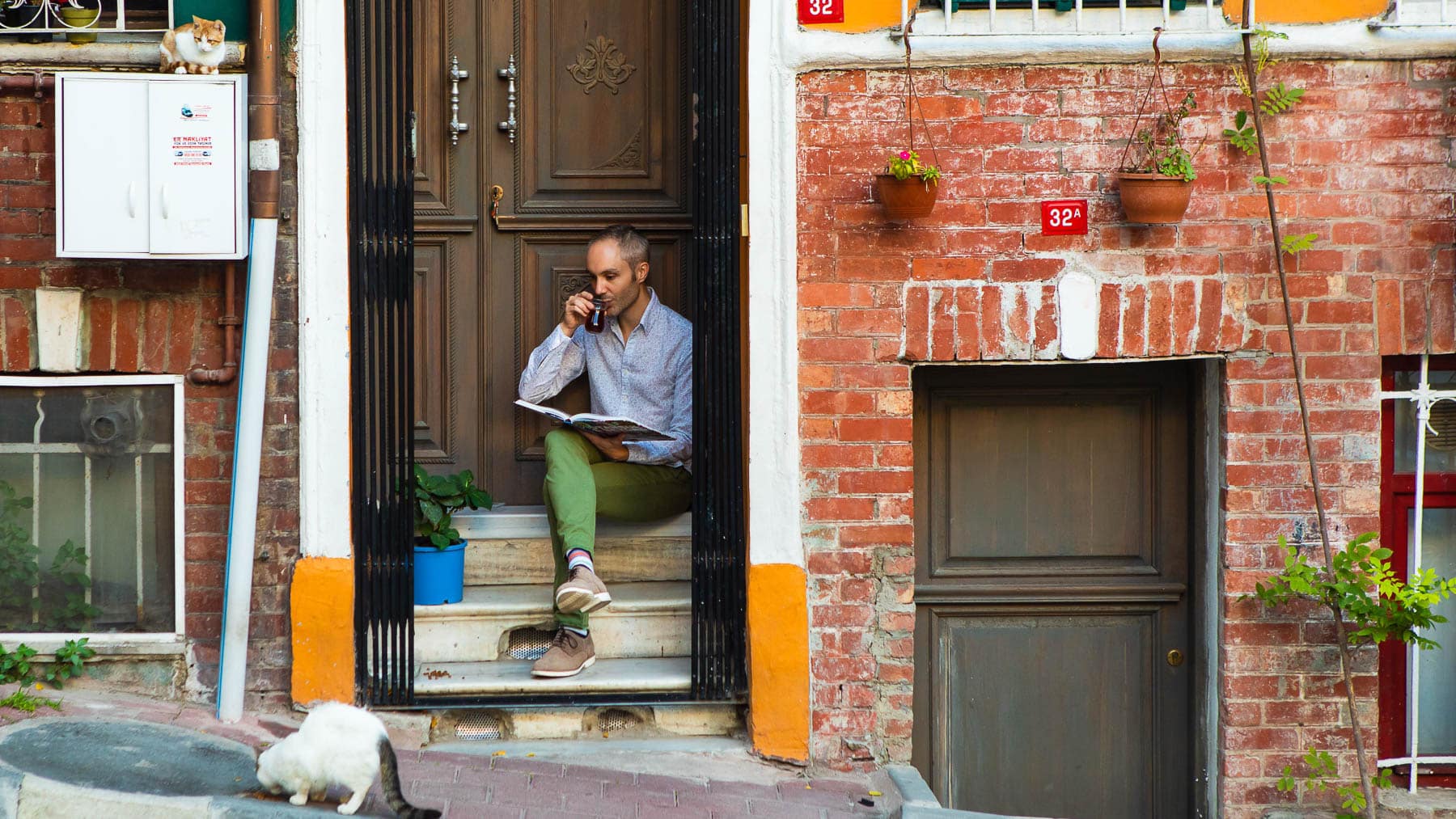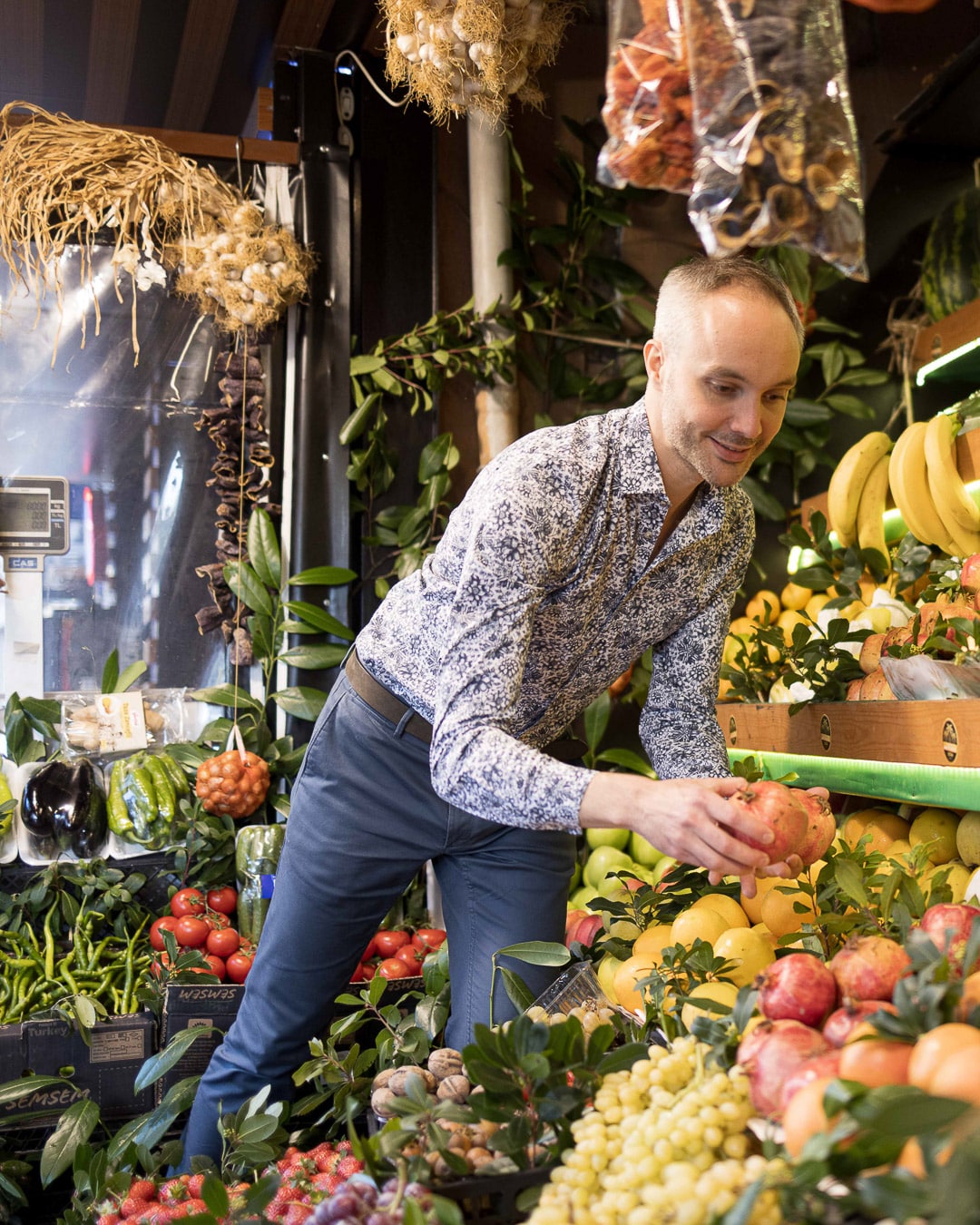Fattoush is the rustic cousin of tabbouleh. Simpler, but equally delicious. Here’s how I make this classic tangy Levantine salad.
Where the key to a good tabbouleh is in the chopping of herbs (and the copious amounts of it), fried bread and sumac is what makes fattoush unique. Claudia Roden even translates it to “bread and sumac salad” in Arabesque, her more accessible book on Middle Eastern cuisine.
Fattoush has its origin in the Levant, and appears to be the result of someone asking the age old question: What to do with old bread?
Each food culture has its own answer. In the Middle East, there’s a whole family of dishes, called fattat, that attempt to answer this.
Fattoush is arguably the most well-known, though many will also be familiar with fatteh – crispy pita with toppings that may include tahini yoghurt and a protein such as chicken, chickpeas or lamb.
What is fattoush?
Fattoush is a crunchy, zingy and absolutely delicious salad. It contains many of the same ingredients you find in the more famous tabbouleh. Tomatoes, herbs, sumac are all important ingredients here.
Where tabbouleh is all about the fine chopping, however, fattoush is all about the crunch.
The vegetables are usually cut chunky, the herbs left leafy. Crispy vegetables, in the form of cucumber and radishes, makes it taste super fresh.
What makes fattoush stand out from more generic vegetable salads, though, is the addition of fried bread – usually pita or lavash – and sumac.
The key ingredients
As with most dishes with long and geographically spread out, fattoush come in a range of varieties, none of them more authentic than the other. Still, there are a few common denominators.
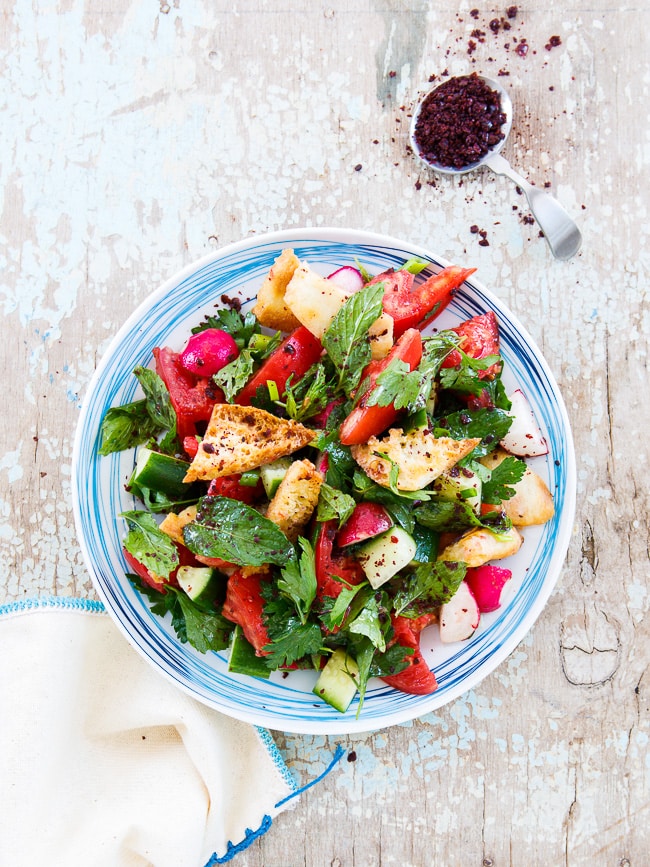
I’ve already mentioned the bread and sumac.
The bread is usually pita or lavash, but can be anything you’ve got lying around, really (for the salad in the photos, I used a leftover white loaf). The important thing is to fry the bread until crispy. Whether you deep fry, regular fry or oven bake is up to you.
I used to bake mine in the oven. This gives even and crispy pita chips. In recent years, I’ve instead started toasting them in a frying pan. I find the slightly burnt bits here and there, and the occasional piece being slightly soft in places, add an interesting layer of texture and flavour to the salad.
If conformity is your thing, however, use the oven.
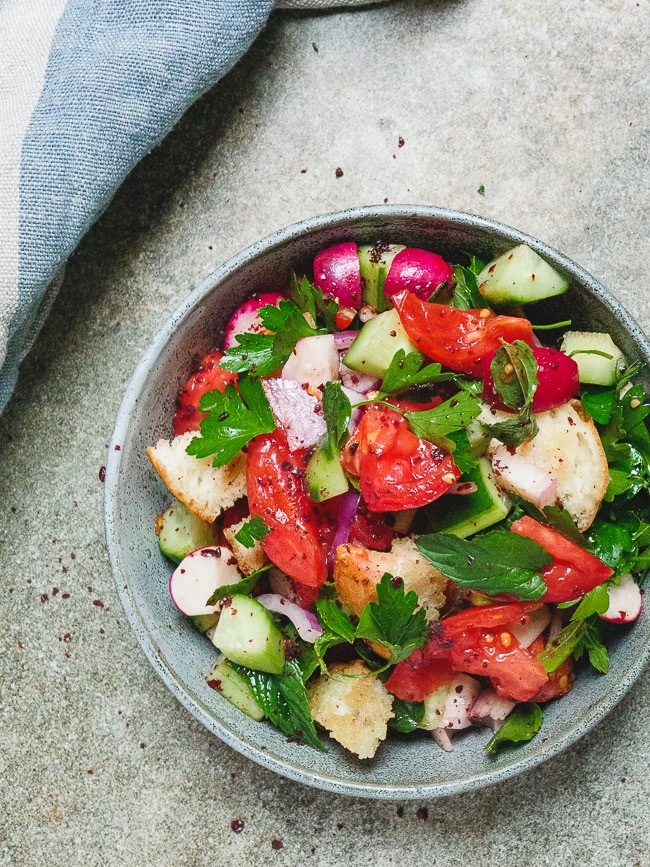
Sumac is a beloved and much used spice in the Middle East. Made from a dried and crushed sour berry, it was used to add acidity to dishes long before lemons claimed the acidity centre stage. Sumak is milder and more fragrant than lemon, and adds a wonderful layer of complexity to the dish.
Most cooks (and recipes) seem to agree that tomatoes, cucumber, flat-leaf parsley, mint and something crunchy, such as radishes or peppers, are other key ingrediens in a classic fattoush.
Many recipes call for green salad leaves, such as purslane or gem lettuce, as well, sometimes in large quantities. Purslane is considered a weed in much of the west, but is a beloved salad green in much of the Middle East (and Turkey). It’s fresh, juicy and slightly tangy, adding another layer of acidity to the salad.
I feel the salad leaves tend to dilute rather than add to the flavour, so I don’t usually add them, although I do make an occasional exception for purslane if I happen to have some in the fridge at the height of its season. I never bother with the lettuce, and would never consider bitter leaves, such as rocket.
How to serve fattoush
Fattoush is often served as part of a meze spread, or as an appetiser (often alongside a few others) before a main meal.
To make it more of a meal, add black olives and feta cheese or fried halloumi. Not quite authentic, perhaps, but an absolutely delicious lunch salad nonetheless.
I find it also works brilliantly along barbecued or grilled meats or fish.
The recipe yields 3-4 portions as a side dish.
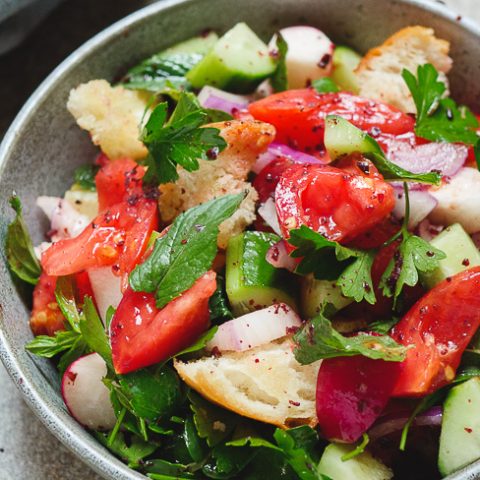
Fattoush
Ingredients
- 1 pita bread, halved into two rounds, or 1 large lavash or other bread, cut into triangles/pieces
- 2-3 Tbsp olive oil
- 250 g tomato, (c. 2 medium), cut into chunks
- 250 g Middle Eastern cucumbers, (c. 3 medium), cut into chunks
- 100 g small radishes, (c. 3–4), cut into chunks
- 3 spring onions (green onions/scallions), sliced thinly
- 30 g flat leaf parsley, leaves only, roughly chopped
- 10 g mint, leaves only, finely sliced
- 2 Tbsp lemon juice
- 4 Tbsp extra virgin olive oil, I use a mild variety
- 2 tsp sumac, plus extra to garnish
- salt
How I make it
- Pre-heat the oven to
200 °C (fan).
- Mix the pita or other bread with love oil. Distribute on a roasting tray, ensuring no pieces overlap. Roast until crispy, but not burned, 5-10 minutes, depending on the size and thickness of your bread pieces. Transfer to a wire cooling rack to cool. Instead of roasting, you can also fry the bread in a large frying pan, tossing regularly until browned at the edges and starting to turn crispy, a few minutes.
- Mix the vegetables with a little salt in a large bowl. Set aside for a few minutes.
- Add the herbs, lemon juice, olive oil and sumak to the vegetables and toss well. Add the toasted bread and toss again. Serve immediately.


